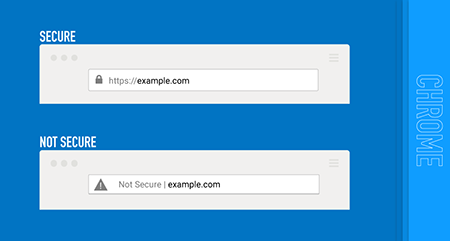Every year, one out of every ten adults in the United States of America falls victim to a scam or fraud. With the proliferation of different websites and technological advancements, the types of online fraud are growing rapidly. To protect yourself, here are some URL check recommendations and resources to help you determine whether a website is legitimate or attempting to scam you.
Check if the URL is misspelled
A misspelled URL is a key indicator of a fake site. Fraudsters may slightly alter a URL name to avoid URL check, such as using amaz0n.com, or they may change the domain extension, such as using amazon.org instead of amazon.com.
Check the domain name
Scammers like to create websites with addresses that look similar to those of well-known brands or companies, such as Yah00.com or Amaz0n.net to surpass manual URL check. Scammers rely on you skimming over the address and domain name, so if you're redirected to a website from another page, always prefer to double-check the address bar first for an URL check.

URL check for site seals
A site seal indicates that the website is genuine, and you can usually click on a site seal to unwind and learn more about the website and how it was verified to perform an URL check. Seals that do nothing when clicked must not be relied on because they are most likely forgery copies of seals.
Review the Company’s Social Media Presence
The majority of legitimate businesses have a social media presence and activity. If you see social media icons on their URL check to see if they link to a social media platform in real, read the reviews of the company, and see if you can find actual company employees on LinkedIn.
Look Up the Domain Age
It is easy to determine the age of a website domain. Verifying a site's age while an URL check helps you gain more confidence that it has been in operation for an extended period of time. Scam and fake sites usually have a short lifespan because they are rooted out early and removed by legitimate business site owners.
Verify the Website Privacy Policy
Most websites are required to disclose their policies and procedures for collecting, using, safeguarding, and storing the personal data of website visitors in accordance with data privacy laws and regulations. Most websites provide a page on their website or a link to a document that contains extensive information. Look for this information and carefully read through them for an URL check before providing any information or making any online purchases.

Run the site through an URL checker
When in doubt, check to verify a website's security using a URL checker. If a website uses encryption, a secure URL check can inform you of any vulnerabilities on the site and the site's level of verification.
Exit If It Seems Too Good to be True
Although it is common for some retailers to offer large price discounts on items in order to empty their inventory or promote a new product or service launch. But if you come across a website that offers an unbelievable deal, go through an URL check and prefer to think twice before proceeding. If it seems too good to be real, it probably isn't legit.
Secure site vs. scam site for an URL check
The padlock on a website indicates that the information on the site is encrypted, and browsers will regard it as secure. Unfortunately, nowadays, a secure website does not always imply that it is safe to purchase from or share information with for an URL check. Just because a site has a padlock does not mean it is authentic. According to research, up to half of all phishing sites now have a padlock.
DV certificates are typically used by fraudsters to surpass URL check, low-level TLS certificates that some certificate authorities provide for free so that they only need to prove ownership of the site to obtain a lock. They do not have to prove the legitimacy of the company with DV certificates. They may utilize an OV or EV certificate at times, but most criminals are discouraged from using them because they require more effort to obtain, such as proving a business registration, paying with a genuine credit card, and responding to certificate authority inquiries.
Fake websites using TLS certificates are generally caught easily during an URL check, but they may be able to cause havoc with a certificate temporarily.
What to do if you visit a fake URL
If you visit a fraudulent website, do not provide any sensitive information such as financial information, a login and password, verification codes, a Facebook login, or even your name and contact details. When in doubt for an URL check, leave it blank and close the tab. Furthermore, do not click on links in unfamiliar emails, online posts, or direct messages. Knowing whether or not a site is fake will help you decide whether or not to buy from it.
Perform an URL check or website check with cWatch Online Website Scanner for free! Being the world's most secure website safety solution, Comodo cWatch offers the most efficient features for malware removal and web security. Visit for more.





